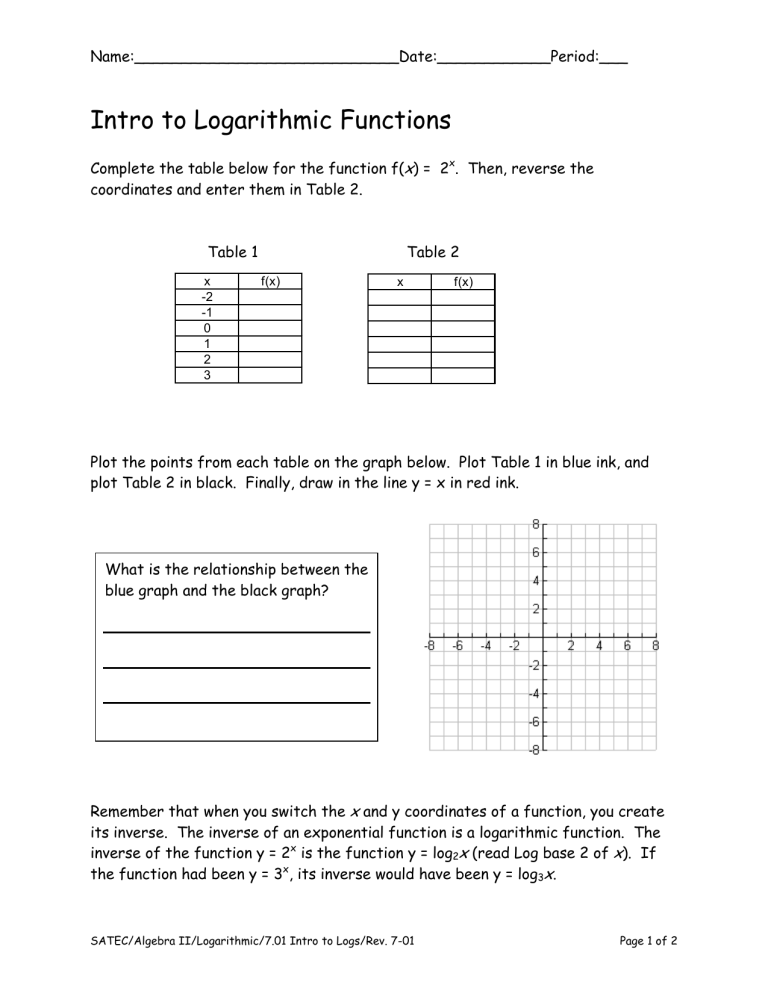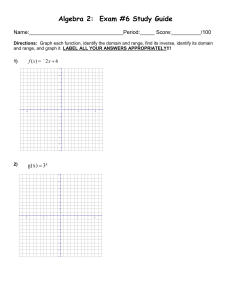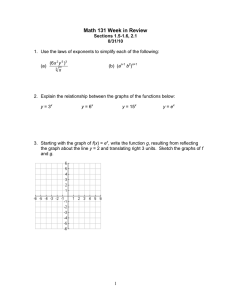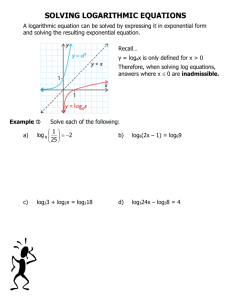Intro to Logarithmic Functions
advertisement

Name:____________________________Date:____________Period:___ Intro to Logarithmic Functions Complete the table below for the function f(x) = 2x. Then, reverse the coordinates and enter them in Table 2. Table 1 x -2 -1 0 1 2 3 Table 2 f(x) x f(x) Plot the points from each table on the graph below. Plot Table 1 in blue ink, and plot Table 2 in black. Finally, draw in the line y = x in red ink. What is the relationship between the blue graph and the black graph? Remember that when you switch the x and y coordinates of a function, you create its inverse. The inverse of an exponential function is a logarithmic function. The inverse of the function y = 2x is the function y = log2x (read Log base 2 of x). If the function had been y = 3x, its inverse would have been y = log3x. SATEC/Algebra II/Logarithmic/7.01 Intro to Logs/Rev. 7-01 Page 1 of 2 Definition of Logarithm: If b and N are positive numbers, b ≠ 1 , and bx = N, then logb N = x. Find the value of each log (solve for x in the exponential form): Exponential Form Logarithmic Form 2x = 8 means log2 8 = ______ 2x = 16 means log2 16 = ______ 2x = 1 means log2 1 = ______ 2x = 1/2 means log2 (1/2) = ______ 2x = N means log2 N = ______ What number(s) can the base of a logarithm never be?____________ Why not? When you see y = logx, it is assumed that you are using base 10. This is what is known as the Common Log. The calculator key marked “log” refers to a common log and uses base 10. Rewrite y = logx using exponential notation.___________________________ SATEC/Algebra II/Logarithmic/7.01 Intro to Logs/Rev. 7-01 Page 2 of 2








